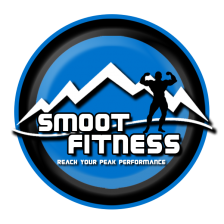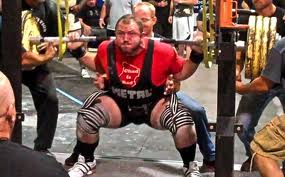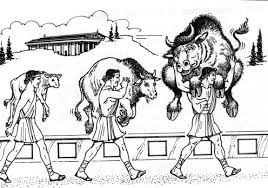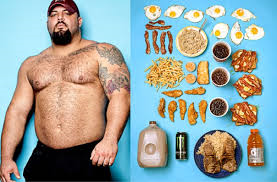Everyone wants to get stronger.
Strength is the foundation of almost all fitness-related qualities and technical skills, and therefore no matter what your current goals are, gaining strength is definitely included.
Now, one thing I’ve noticed recently is that although many people WANT to get stronger, not many people know HOW to go about doing it.
They either overcomplicate the process or simply don’t know where to start, and that’s sad, because gaining strength is honestly quite simple.
So, the goal of today’s blog post then, is to teach you how to get stronger, and how to do so in the simplest way possible.
This isn’t a programming article, or a step-by-step guide on how to design a training plan.
Rather, it’s a culmination of what I consider the 8 fundamentals of a strength program, and as long as these fundamentals are in place – regardless of how the finer details of the program are set up – you’ll be good to go!
1. Prioritize Compound Lifts
This is number one on the list because rep ranges, sets, tempos, etc. really don’t matter if you’re not using the correct exercises.
What constitutes “correct?”
Major compound lifts that work multiple muscle groups simultaneously, and here’s why:
- They mimic fundamental movement patterns
- They work the body as a unified and coordinated unit
- They have an extremely high loading capacity
- They stimulate a large hormonal response
Squats and deadlifts, pull-ups and push-ups, rows and presses – these are the exercises that your training plan should be based upon.
This isn’t to say you should never do isolation work, as it definitely has it’s uses and benefits.
But, no one –and I mean NO ONE – ever got strong in a curl rack, so if your goal is to build mind-blowing levels of strength, stick to the compounds.
2. Lift Heavy
Simply enough right?
In order to get stronger, you need to lift heavy.
But “heavy” isn’t a moderate load for 8-12 reps. That’s “moderate.”
Heavy is 85-100% of your one rep max (1RM), or a load you can lift for 1-5 reps.
This is an important distinction because increases in strength have a lot to do with neural adaptions (increased synchronization, rate coding, motor learning, etc.), and these adaptions don’t take place under lighter loads.
This doesn’t mean you should ALWAYS lift heavy, as doing so will develop glaring weak points and unnecessary levels of fatigue.
But, specificity (keeping your training specific to the goals at hand) is important, and if your goal is to increase your ability to lift heavy loads, you need to actually spend time lifting heavy loads.
3. Add Weight to The Bar
Have you ever heard of Milo of Croton?
In short, Milo was a Greek athlete, strongman, and wrestler that trained for the Olympics by carrying a small calf on his back.
Every day the calf would grow, and so would Milo’s strength.
By the start of the Olympics, Milo was able to carry a full grown bull around the coliseum.
Now Milo had a bull (which is pretty freakin badass), and you have steel bars and weight plates, but the principle remains the same: In order to get stronger, you need to progressively lift heavier loads.
This is called progressive overload, and it’s the SINGLE BEST WAY TO GET STRONGER.
Adding reps with the same weight, adding sets, decreasing rest time – these are certainly all ways to make progress and should be an integral part of your training plan.
With that being said, these forms of progression are supplements to adding weight to the bar, not replacements.
When it comes to gaining strength, increasing load is your number one priority.
4. Alter Training Variables Every 4-12 Weeks
This is for two reasons:
1. The body adapts to the stresses imposed on it, so there is only so long you can use the same exercises or total amounts of volume and intensity before you experience diminishing returns (or stop benefiting from your training like you did before).
2. To prevent boredom
The first point is pretty simple.
No new stress = no reason for the body to adapt = no adaption. There’s simply no way getting around this.
When it comes to boredom, being bored – in my opinion – is the number one hindrance to overall success and performance.
If you’re bored, you won’t have any motivation to train.
If you have no motivation to train, you won’t be consistent.
If you’re not consistent, you’re not going to make any progress.
So, how do you adjust your training to prevent boredom and/or a drop in progress?
Simple:
- Change intensity and/or volume (load, sets, reps, tempos, rest time, etc.)
Or
- Change exercises (back squats to pause/box/front squats, conventional deadlifts to sumo/trap bar/Romanian deadlifts, etc.)
Does this mean you HAVE to change variables every 4-12 weeks?
No it doesn’t. If you’re enjoying your training and continuing to see good results (no matter how long you’ve been in a certain phase or block), DON’T CHANGE IT!
With that being said, MOST people get bored or stall out after 4-12 weeks, and will therefore require some sort of adjustment to continue moving forward.
5. “Remove the Junk Miles”
This is one of my favorite quotes from Hybrid Training Coach Alex Viada.
The body has a finite amount of stress it can recover from, so you have to choose wisely where this stress originates.
If you’re squatting heavy 2-3 x per week, do you really need to be doing fifteen sets of leg extensions?
If you’re doing interval, tempo, and long distance runs, do you really need to go out and just “run a few miles?”
NO!
All that’ll do is hinder recovery, decrease performance, take up time that could be spent doing something that actually benefits you, and take away from the main overarching goal of your training plan.
Everything you do – in training, with nutrition, when recovering – should make you better.
If it doesn’t, it needs to be eliminated.
6. Reduce Cardiovascular Activity (If you’re ONLY focused on Strength)
Notice I said “reduce,” and not “completely eliminate.”
This kind of piggybacks off of my last point, but like I said, there’s only so much stress the body can handle – and recover from – at one time.
Strength and endurance work CAN be trained simultaneously (if you want to read more on that, I highly suggest checking out the works of Alex Viada over at Complete Human Performance), but you’ll generally either be able to make incredible gains in one area while maintaining performance in another, or make mediocre gains in both at the same time (genetic freaks aside).
Which means, you have to decide what’s most important.
If it’s strength (and strength only), most of your emphasis needs to be placed on your time in the gym (and the recovery time thereafter), with a smaller amount of time devoted to endurance work.
Your goals may change later on, and that’s fine.
But if you’re main overarching goal at the moment is to build mind-blowing levels of strength, reduce (don’t eliminate) the cardio.
7. Sleep
It’s no secret that if you want to perform at your best – in any sport or physical activity – you need to get plenty of sleep.
This is because sleep…
– allows our muscles to repair and develop
– allows our CNS to recover
– replenishes our neurotransmitters
– releases growth hormone
– maximizes/maintains immune function
… and a lot of other important things that have a large impact on our overall health, performance, and recovery.
How much sleep should you aim for per night?
Mama knows best – 7-8 hours.
Will this always be possible?
No, probably not.
But as long you’re hitting around 8 hours on a fairly consistent basis, your recovery will be just fine.
8. EAT
Finally, you need to eat.
This doesn’t mean eat yourself in to obesity. That’s definitely not a good idea.
But gaining strength requires extremely high levels of intensity, and you’re not going to be able to maintain this intensity with the food intake of a thirteen year old girl.
So, when it comes to eating for strength, here are some general guidelines I recommend:
- Eat a majority of nutrient dense foods
- Eat at or above your maintenance caloric intake (the amount of calories it takes to maintain your current body weight)
- Get in .8-1g of protein per pound of body weight
- Eat a moderate amount of fats (.3-.5g per pound of body weight)
- Eat a crap ton of carbs
- And if you start gaining too much weight, cut the food back a bit
Like I said before, your quest to gain strength isn’t an excuse to get fat. All that’ll do is slightly improve your leverages and decrease the number of stairs you can climb before requiring the use of an inhaler.
On that same note, it’s also not the time to starve yourself, or to be worrying about whether or not you’ll still be able to take bathroom selfies of your lower abdominal veins.
Find a balance.
At the end of the day, high levels of performance require large amounts of nutrients, so if you want to get stronger, EAT!
Wrapping up:
So there you have it guys – my top 8 fundamentals of a strength program.
Honestly, getting stronger really isn’t that difficult, and I can almost guarantee that if you follow these principles, your strength will dramatically improve.
Will things get more complicated as you get farther along in your training career?
Yeah they probably will.
But at the end of the day, nothing works without a solid foundation, and you’d be hard-pressed to find an elite level athlete who doesn’t prioritize the fundamentals.
Like What You See?
Get the Smoot Fitness Guide to Getting Stronger - FREE.






Leave a Reply